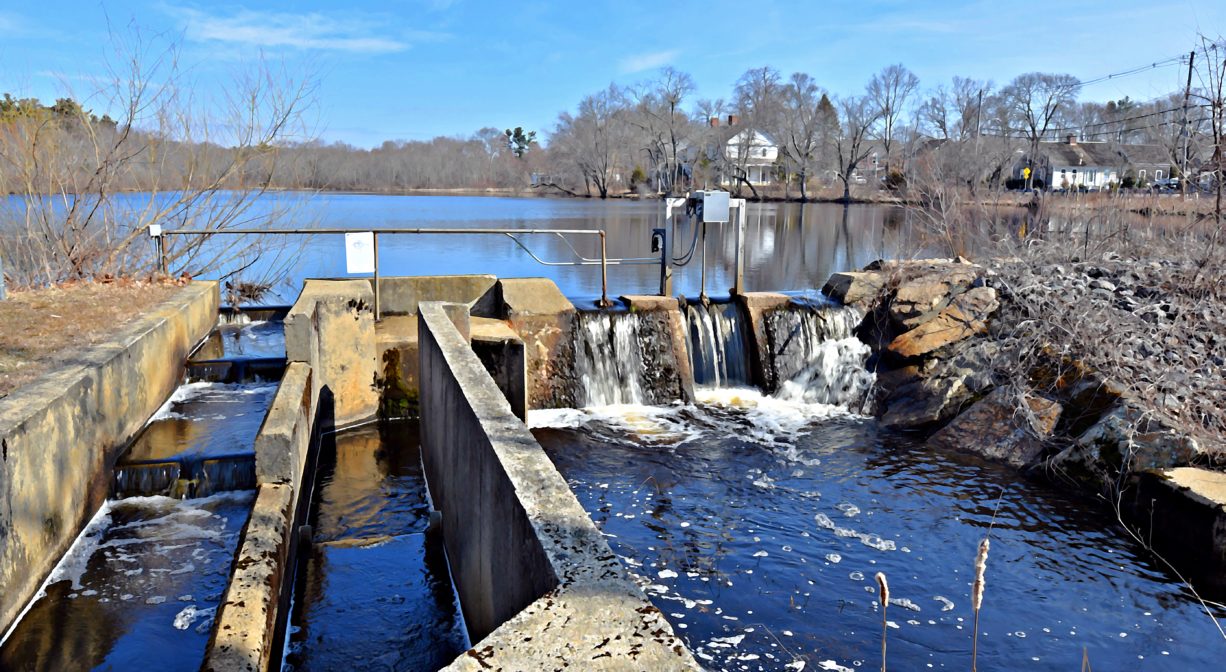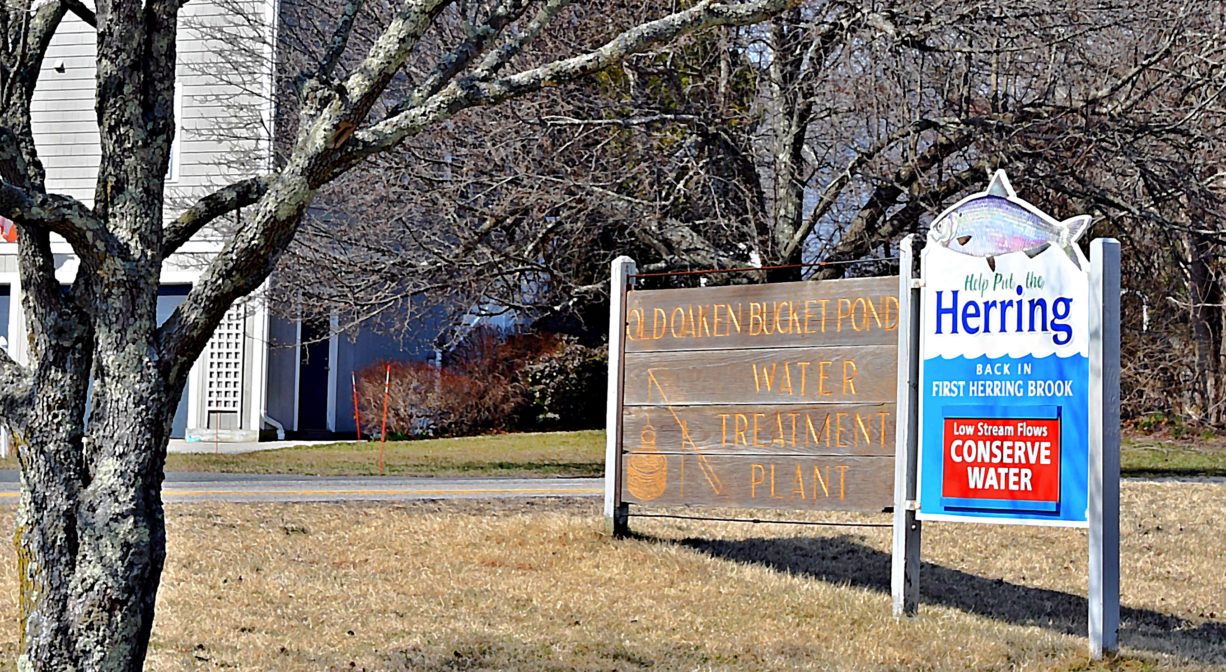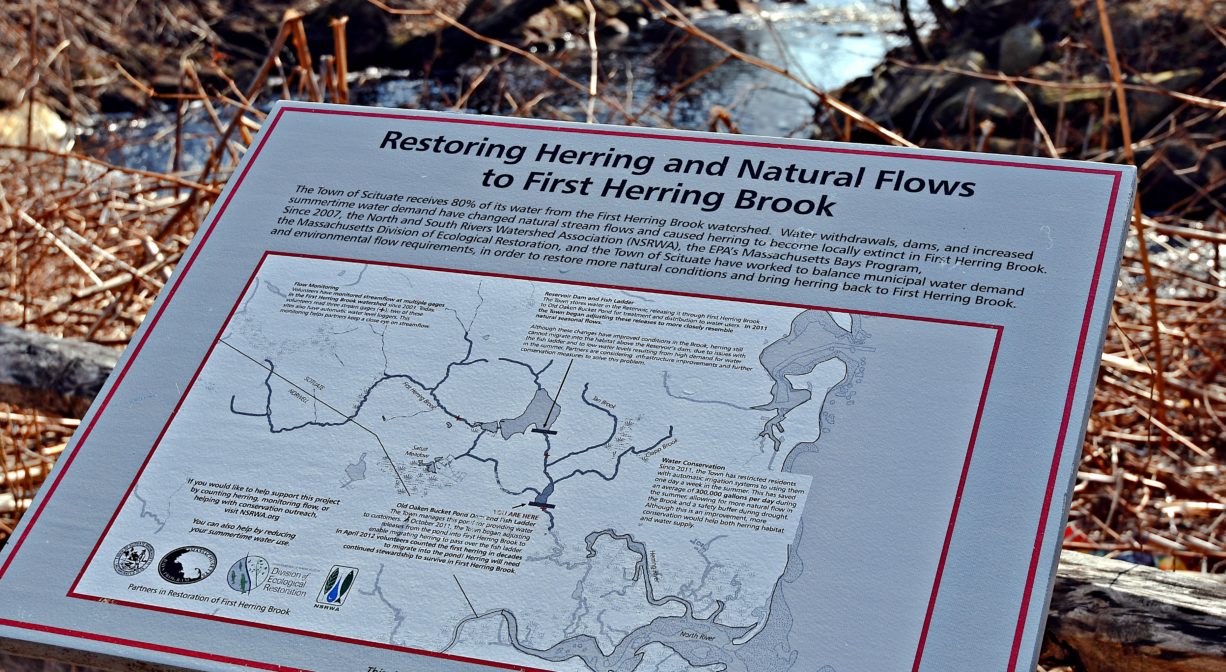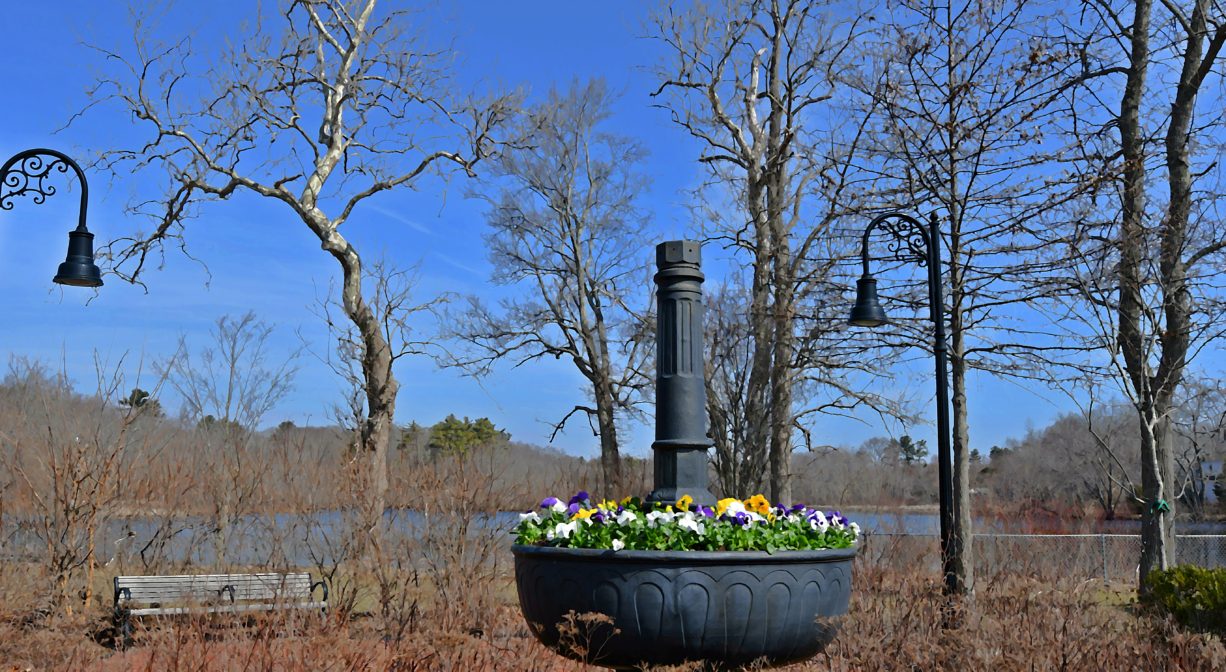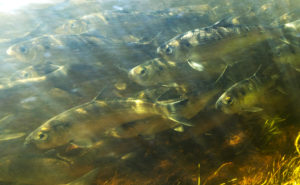Owned By: Town of Scituate
Scituate’s Old Oaken Bucket Pond is one of two reservoirs on First Herring Brook created by dams. The town draws its municipal water from the pond. First Herring Brook Reservoir, upstream, feeds Old Oaken Bucket Pond. As this is a public water supply, swimming, fishing and paddling are not permitted.
There is a fish ladder on site. Herring counts are ongoing at between April 1st and the end of May. Stop by and you just might see some fish!
Features
Old Oaken Bucket Pond gets its name for a poem written by Samual Woodworth, published in 1817. A Scituate native, Woodworth was the editor of the New York Mirror. His nostalgic poem about his childhood home brought him, and Scituate, to national acclaim. The original homestead (now renovated) is located on Old Oaken Bucket Road.
This is the first verse of the poem:
How dear to this heart are the scenes of my childhood,
When fond recollection present them to view!
The orchard, the meadow, the deep-tangled wild-wood,
And every loved spot which my infancy knew!
The wide-spreading pond, and the mill that stood by it,
The bridge, and the rock where the cataract fell,
The cot of my father, the dairy-house nigh it,
And E’en the rude bucket that hung in the well-
The old oaken bucket, the iron-bound bucket,
The moss-covered bucket which hung in the well.
In 1935, the poem became Scituate’s official town song.
This land is within the region of the Massachusett (or Massachuseuk). To learn more about local Native American tribes, we encourage you to interact with their members. The Mattakeeset band of the Massachusett, and the Massachusett tribe at Ponkapoag, both share information on their websites.
Old Oaken Bucket Pond was the site of a rare local battle during King Philip’s War. The Wampanoag and Massachusett tribes had been living in the area for centuries when the European colonists first arrived in the 1620s. While their numbers were low, due to a recent plague of smallpox, by the 1670s, the aboriginal population had rebounded. Noting that the colonists were trying to drive them away, Chief Metacomet of the Wampanoag, aka King Philip, began uniting area tribes to fight back.
A Colonial army was assembled –1,000 militia men, including 27 from Scituate. Led by Governor Josiah Winslow and General James Cudworth, they attacked the Narragansetts in November 1675, burning villages throughout Rhode Island. The native tribes retaliated by setting fire to Providence and other towns. More than half of New England’s towns were attacked. Twelve towns in the Plymouth and Rhode Island colonies were destroyed, with many more damaged. Because of the war, the colonial economy was nearly ruined, and one tenth of the men eligible for military service (age 16-60) were killed. Ultimately the colonists prevailed, and the Wampanoag and Narragansett tribes were nearly destroyed.
Here’s how it played out locally: King Philip had made raids on Weymouth, Middleborough, and Bridgewater. Because of this, in Scituate, a watch with “fixed armes and suitable ammunition” had been set up by the youths and older men who remained in town. On May 19, 1676, a band of Narragansetts and Nipmucks began an attack in Hingham, burning five houses. They proceeded the next day into Hanover, Norwell and Scituate, destroying 13 houses, a sawmill, and probably ten barns.
The battle culminated at the fort by the Stockbridge Grist Mill at Greenbush in Scituate. The stockade faced the road and was protected from behind by Old Oaken Bucket Pond. Local lore indicates that the fight lasted all day, and that Cornet Robert Stetson (age 64 at the time) and Isaac Chittenden (who was later killed in the fight) led the colonial force, and ultimately succeeded in fending off the attackers.
Habitats and Wildlife
Both Old Oaken Bucket Pond and the First Herring Brook Reservoir have fish ladders for herring at their dams. Unfortunately, the herring run is quite depleted, in part due to the competition for water in the summertime between man and nature. If managed well, there is enough water in the system for both humans and fish. The NSRWA and the Town of Scituate have been working together to improve streamflows, operate the fish ladders, and restore the fisheries at these sites. This restoration project will ensure adequate water supply for the town, while also supporting wildlife.
First Herring Brook finds its source in Scituate in the area west of Route 3A, between First Parish Road and Old Oaken Bucket Road. It flows through the First Herring Brook Reservoir, and downstream to Old Oaken Bucket Pond, passing through two dams. Below the Stockbridge Mill, at the Driftway, it flows into Herring River, a major tributary to the North River. Herring River flows into the North River near The Spit.
Historic Site: Yes
Park: No
Beach: No
Boat Launch: No
Lifeguards: No
Size: 10 acres
Hours: Dawn to Dusk
Parking: Parking for 3-4 cars, across the street at the Stockbridge Mill. Additional parking, off Route 3A, at the Scituate Water Department.
Cost: Free
Facilities:
Fish ladder. Interpretive signage. Trash receptacle. There is a small park near the rotary with 4 benches and a clock.
Dogs: Leashes and prompt waste pick-up recommended, given that this is the town's water supply!
Boat Ramp: No
ADA Access: No
Scenic Views: Yes
Waterbody/Watershed: First Herring Brook (North River watershed)

